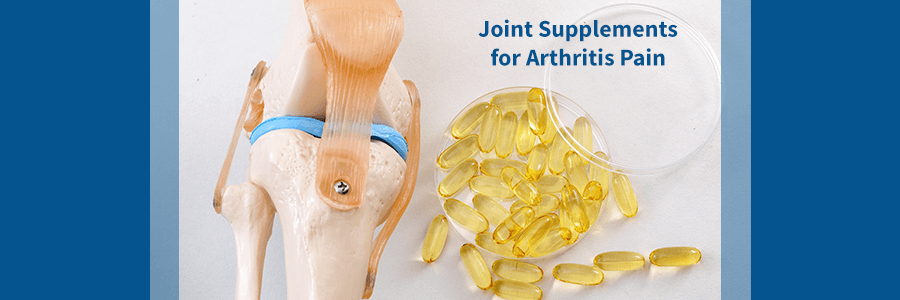Prevent Arthritis Symptoms This Winter

Arthritis is a relatively common condition, but it is still not fully understood even today. The confusion starts with the fact that the condition is not simply one disease. In fact, arthritis breaks down into hundreds of different joint pain categories. The pain from the condition ranges from chronic, dull aches to sharp, debilitating misery. To make matters worse, seasonal changes–particularly winter–are known to exacerbate symptoms. Unfortunately, we don’t know the exact reason for this, but you can take steps to alleviate the pain.
What is Arthritis?
The easiest way to characterize the condition is simply as joint inflammation. Of course, the disease breaks down even further than this, but this is the common thread between the different types. There are multiple problems that can inflame joint tissues, but the most common form is through osteoarthritis.
Osteoarthritis, aka degenerative arthritis, is the most common form of the condition because it is the result of age-related wear and tear. As we age, the tissues in the body degenerate over time. With osteoarthritis, the articular cartilage that covers the ends of a bone wears down. Without this protection, other structures such as tendons and ligaments have to go into overdrive to compensate for this problem. Cartilage is like the natural lubricant of the body, and without it, our bones grind together with use. This leads to excessive friction generation, which eventually causes swelling, inflammation, and pain.
Of course, connective tissues may become inflamed through other potential causes. With rheumatoid arthritis (RA), the body mistakes certain joint tissues as foreign material and attacks them with immune defenses. Unlike osteoarthritis, medical experts consider RA to be an autoimmune disease, putting it into a different class altogether. Usually, this disease occurs in the elderly. That being said, it is still possible–although less common–for other age groups to contract RA.
Other forms of arthritis include gout, as well as psoriatic, septic, and reactive arthritis.

Key Symptoms of Arthritis
Because there are so many different types of the disease, there are naturally many different arthritis symptoms. The most common and obvious symptom between the vast variety of diseases is the most debilitating: chronic back pain. Like arthritis, there are many different ways that pain may manifest. With this condition specifically, pain may feel like a dull ache or a burning sensation.
Doctors usually diagnose which version of the condition you have by a number of arthritis pain-related factors. For instance, doctors will consider things like the location(s) and the progression pattern of the symptoms. They will also want to know whether or not the symptoms are present in more than one location. RA, for instance, tends to affect multiple areas of the body as it is an autoimmune disease. In addition, RA often causes fatigue in patients. Conversely, osteoarthritis commonly manifests in weight-bearing joints, such as the hips and knees. That being said, there are also instances where this form of the condition affects the extremities and neck.
Arthritis in the Winter
There are very strong correlations between symptom severity and cold weather. Studies show that changes in barometric pressure and temperature may increase pain levels in arthritis patients. We don’t know exactly why that is, but the numbers support it. In some studies, as many as 92% of participants reported that their pain and stiffness exacerbated during winter.
The prevailing theory is that the symptoms worsen due to a drop in vitamin D levels associated with winter. That, and the fact that pain receptors become hypersensitive when the weather is colder. In fact, there is a correlation between symptom severity and 10-degree interval drops. Other atmospheric conditions such as rain can increase swelling and pain in joint tissues.

Arthritis Management for Winter Flare-Ups
Unfortunately, we can’t really control the weather. In fact, we can hardly predict it. But luckily, there are plenty of steps that arthritis patients can take to reduce symptom severity.
For one, it is important to wear warm clothing in the winter as well as the rainy seasons. When surrounding temperature receptors detect cold, they are more active. This makes nearby pain receptors more sensitive than they usually are. So, it is very important to make sure that you cover up properly for the weather. Medical experts recommend wearing loose layers when you have the option.
Sometimes, simply covering up is not enough to relieve symptoms. However, there are still plenty of options that arthritis patients have to make their lives easier. For one, many arthritis patients take oral medication, such as NSAIDs, to help alleviate pain and swelling. Your doctor may prescribe stronger medication if necessary, but in such cases, it is very important to stick to the recommended dosage.
Physical therapy exercises are extremely effective in treating arthritis-related symptoms. In addition to this, swimming in a heated pool can soothe your joints, making this a solid technique for relief. Of course, you can also accomplish this by taking a simple, heated bath for a quick reprieve from pain. Yoga is also known to be an excellent form of exercise for treating arthritis symptoms. For a list of effective and low-level exercise suggestions, talk to an orthopedic doctor in your area.
Joint supplements and herbal medicines may also reduce joint pain in some patients. These include supplements such as ginger, turmeric, krill oil, and more. Many of these medicines come in solubilized liquid to help the body with more efficient absorption. Glucosamine, chondroitin, and hydrolyzed collagen are all also known to help alleviate symptoms.

Arthritis Risk Factors
One of the best ways to treat arthritis is by minimizing the various risk factors associated with it. Here is a comprehensive list of controllable factors:
- Obesity: The more weight that your joints have to bear, the more likely you are to contract osteoarthritis. This is especially true in the knees. One of the best ways to maintain a healthy weight is by modifying your diet based on your activity level.
- Infection: Bacteria and viruses are known to infect joints and potentially lead to the development of arthritis. This, however, is hard to prevent by making lifestyle changes. The best thing you can do to prevent this? Remain observant and see a doctor immediately if you notice swollen or red joints.
- Joint Injuries: Repetitive stress and overuse of the joints may damage connective tissues and result in arthritis. The best way to prevent this from happening is through special joint exercises. Proper stretching is also a good preventative measure.
- Occupation: Similar to the last section, if your job has repetitive knee bending, then your joints may become overused. Make sure that your worksite shows competent safety compliance. Additionally, it is important to exercise proper ergonomics whenever lifting is necessary.
- Smoking: Smoking increases a person’s chance of contracting RA. If the person already has RA, smoking may make it worse. Aside from just that, smoking also causes a slew of other medical problems and it makes it difficult to stay active. The best thing that you can do is to quit, but obviously, that isn’t easy. There are plenty of free resources on the internet with great advice on how to quit smoking effectively.
If you have arthritis or similar symptoms that are not getting better with time, please contact us at (855) 210-0899. New York City Spine is staffed with highly qualified back pain specialists who will make sure that you get the best care for your specific needs!
